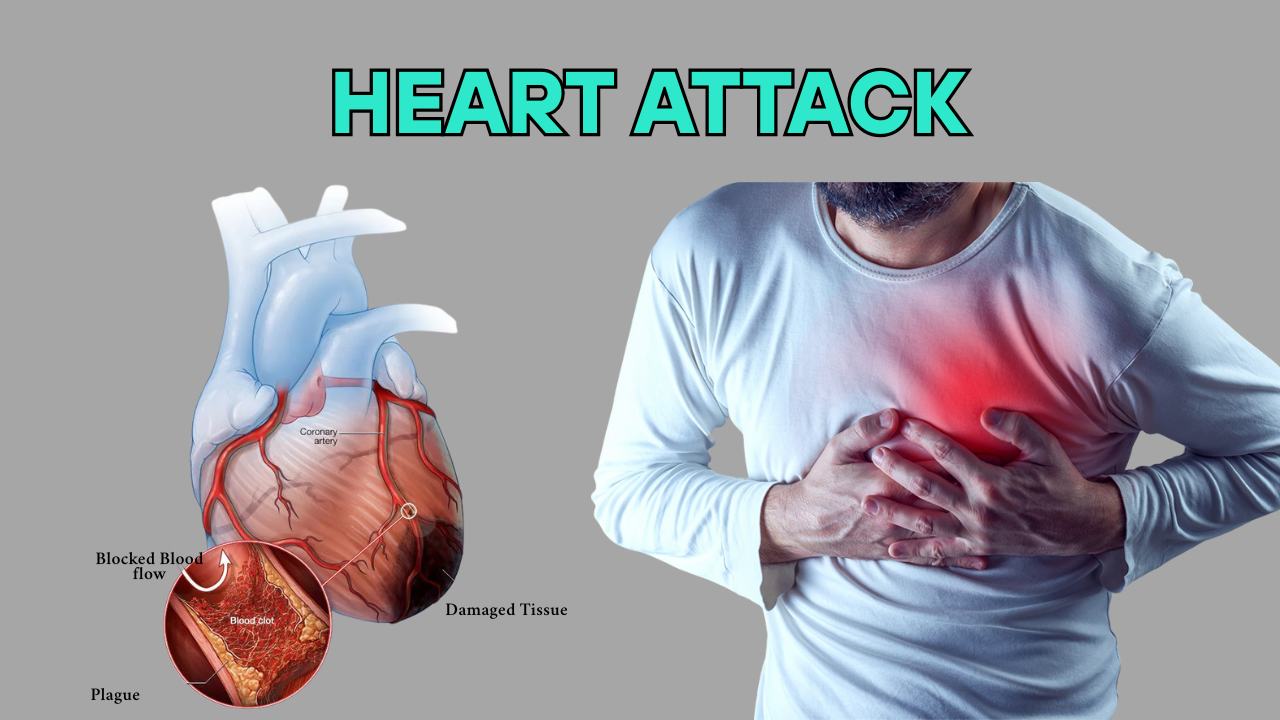- everything you need to know about -
heart attack
watch a
video
- HEALTH & WELLNESS-
heart attack
Every heartbeat counts. Yet, for millions of people every year, that rhythm is interrupted by a condition known as a heart attack — a medical emergency that often strikes without warning. But with the right knowledge and simple lifestyle changes, heart attacks can often be prevented.
In this blog, we’ll walk you through what a heart attack feels like, early symptoms, why it happens, and how to protect your heart health.
🔴 What Is a Heart Attack?
A heart attack, also called a myocardial infarction, happens when the blood flow to a part of the heart muscle becomes blocked. This usually occurs due to a buildup of plaque — a mix of fat, cholesterol, and other substances — in the coronary arteries.
Without enough oxygen-rich blood, the heart muscle gets damaged. If not treated quickly, it can lead to permanent heart damage or even death.
⚠️ Early Symptoms of a Heart Attack
The first signs of heart problems can vary between people. Some experience sudden, intense chest pain, while others may feel only mild discomfort. Here’s what to look out for:
Chest pain or tightness (most common)
Shortness of breath
Fatigue or weakness
Pain in arms, neck, jaw, or back
Nausea, light-headedness, or cold sweats
Important: Some people — especially women, older adults, and those with diabetes — may have “silent” symptoms or more subtle signs. Never ignore unusual body signals.
🧬 What Causes a Heart Attack?
While lifestyle plays a big role, multiple factors increase the risk of heart attacks. The most common causes of heart attack include:
High blood pressure
High cholesterol
Smoking
Obesity
Diabetes
Lack of exercise
Unhealthy eating
Chronic stress
In many cases, the first heart attack could have been prevented if the risk factors were managed earlier.
💡 Simple Tips for a Healthy Heart
Protecting your heart doesn’t require expensive programs. Small, consistent changes can lower your risk dramatically. Here are some heart health tips backed by science:
1. Eat a heart-friendly diet
Focus on vegetables, fruits, whole grains, lean protein, and healthy fats (like olive oil and nuts).
Reduce sodium, sugar, and processed food intake.
2. Get moving
Aim for 30 minutes of moderate exercise at least 5 days a week.
Walking, swimming, or cycling are excellent for heart health.
3. Don’t ignore chest pain
Even mild chest discomfort could be serious. Get checked if it feels unusual.
4. Stop smoking
Quitting smoking is one of the best things you can do for your heart — and your entire body.
5. Manage stress
Chronic stress increases blood pressure and heart rate. Try deep breathing, meditation, or talking to a friend regularly.
🧠 Why Heart Attack Awareness Matters
Many people dismiss early signs of heart issues, thinking they’re due to stress or indigestion. By the time they seek help, it may be too late.
That’s why awareness saves lives. Recognizing the symptoms and acting fast — by calling emergency services — can make the difference between life and death.
🩺 When to See a Doctor
Don’t wait for a major scare to get your heart checked. If you have a family history of heart disease, or experience any of these symptoms regularly, speak with a healthcare provider:
Irregular heartbeat
Breathlessness during mild activity
Frequent chest discomfort
Swelling in legs or ankles
A simple ECG, blood pressure check, or cholesterol test can reveal early warning signs.
🌿 Final Thoughts: Your Heart, Your Responsibility
Your heart beats over 100,000 times a day — without asking for much in return. Give it the care it deserves.
Whether you’ve had a heart scare, or you’re simply trying to be proactive, small steps today can lead to a longer, healthier life tomorrow. Listen to your body, nourish it well, move daily, and never ignore unusual chest pain or fatigue.
Take charge of your heart health — because prevention is always better than cure.

